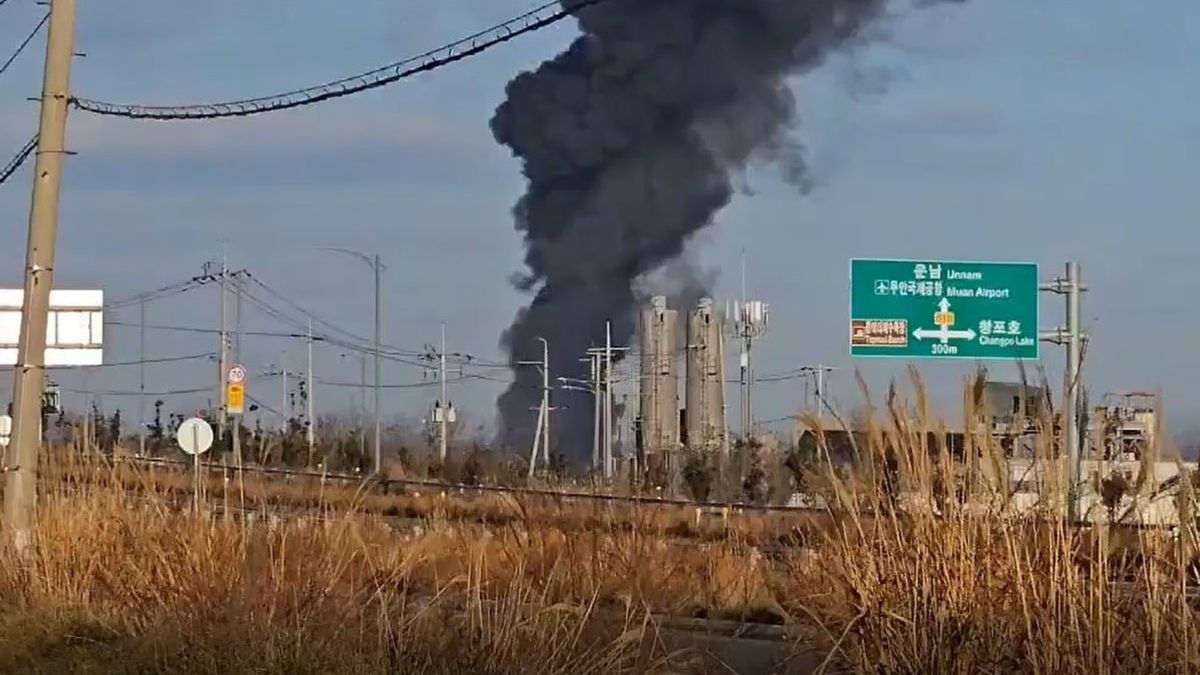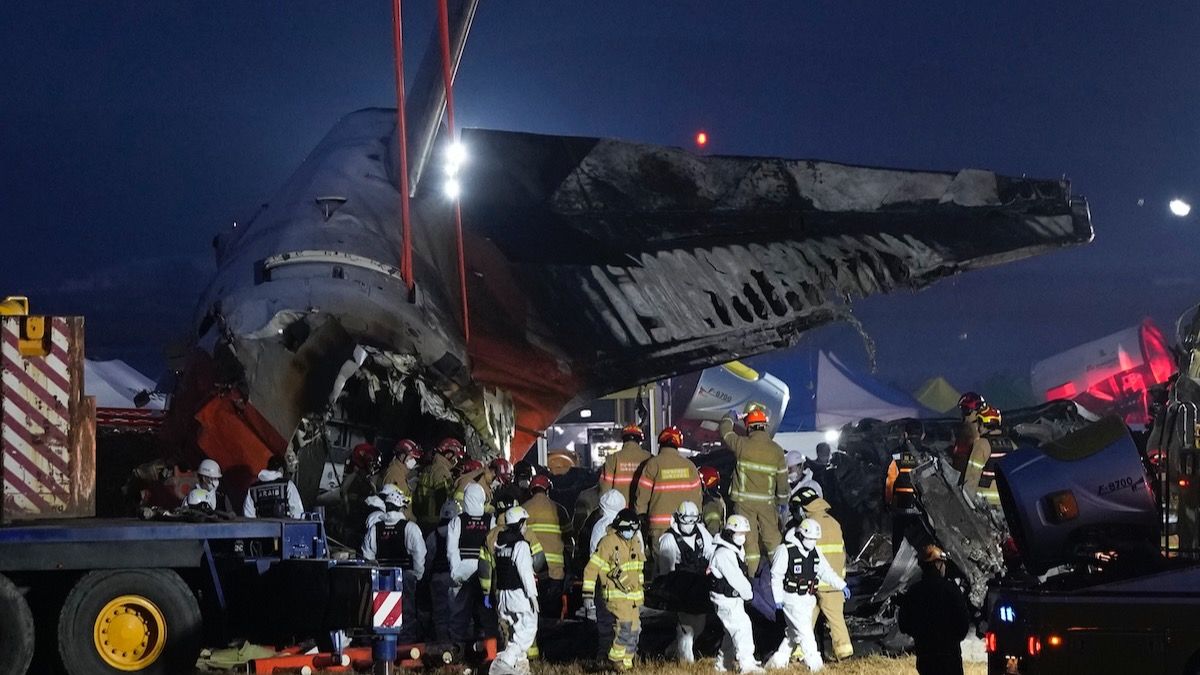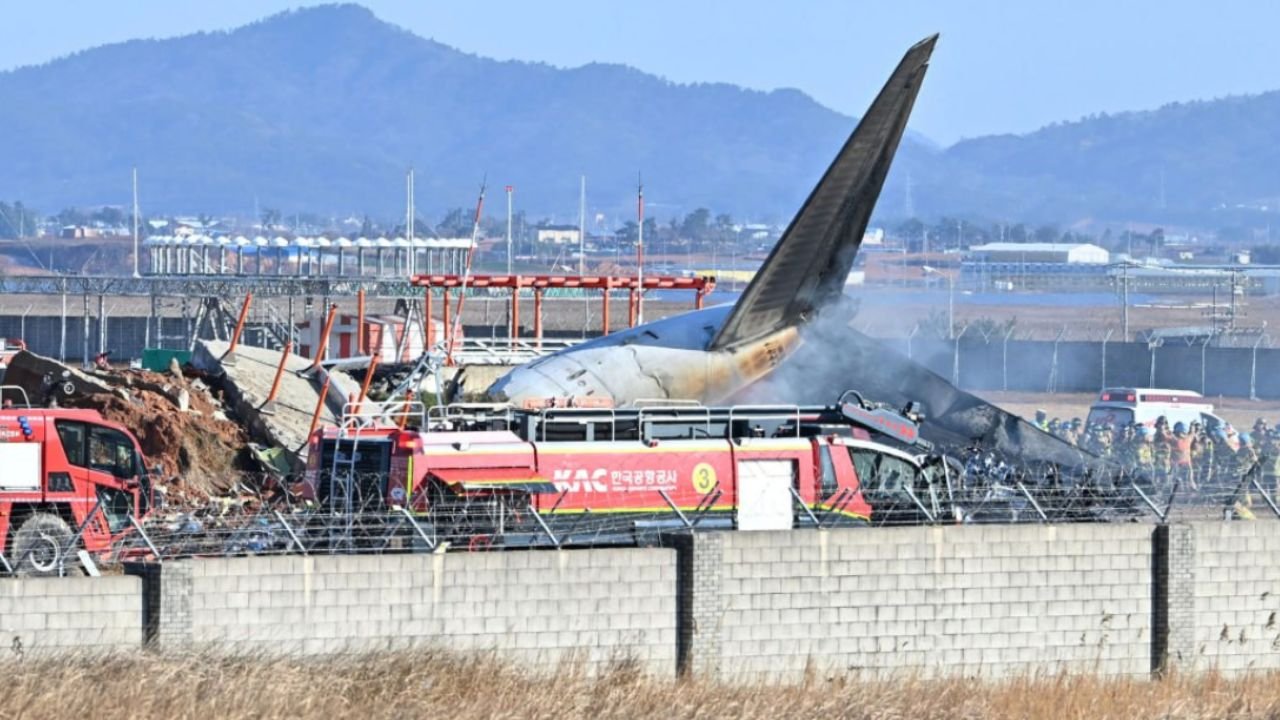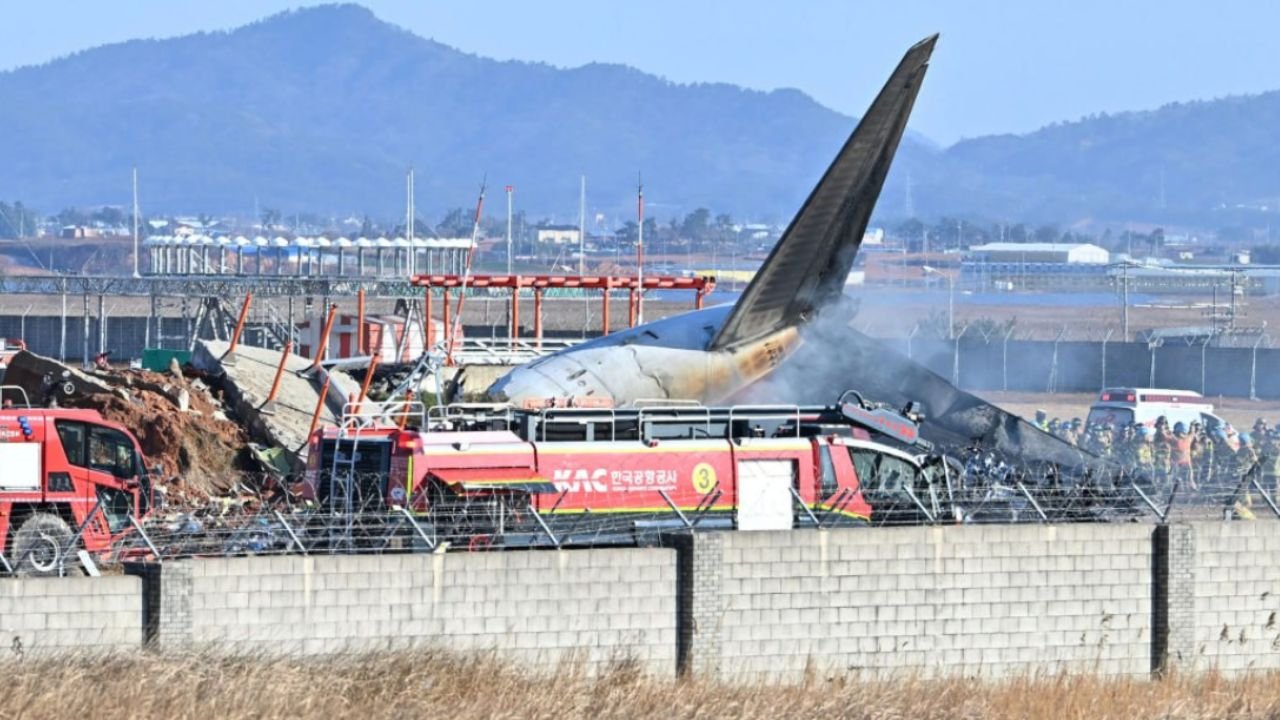Plane Crash Korea: This isn’t just a collection of statistics; it’s a story of loss, resilience, and the relentless pursuit of safer skies. We’ll explore the devastating impact of past crashes, examining the human factors, technological advancements, and regulatory changes that have shaped Korean aviation safety. Get ready to delve into a compelling narrative of both tragedy and triumph.
From the early days of aviation in Korea to the sophisticated technology of modern air travel, we’ll trace a path through significant events, highlighting key incidents and their lasting consequences. We’ll analyze investigations, safety improvements, and the evolving relationship between the public, the media, and aviation authorities. This journey will shed light on the continuous effort to learn from past mistakes and build a safer future for air travel in Korea.
The recent plane crash in Korea is a tragic reminder of the risks involved in air travel. It’s a stark contrast to the dazzling spectacle of technology showcased at the china new year drone show , where coordinated drones painted the night sky. Thinking about the precision of those drones makes you appreciate the complex systems needed for safe air travel, highlighting the devastating impact of failures in such systems as seen in the Korean crash.
A History of Plane Crashes in Korea: A Look at Causes, Impacts, and Lessons Learned: Plane Crash Korea
Korea’s aviation history, like that of many nations, includes both remarkable progress and tragic setbacks. This article examines significant plane crashes in Korea, analyzing their causes, the resulting changes in safety regulations, and the evolving role of technology and public perception. We will explore the human factors involved, international collaborations, and the enduring legacy of these events.
Historical Context of Plane Crashes in Korea
Understanding the historical context of plane crashes in Korea requires examining a timeline of significant events, the types of aircraft involved, and the contributing factors identified in investigations. This analysis reveals a pattern of evolving safety measures in response to these tragedies.
| Date | Aircraft Type | Location | Casualties |
|---|---|---|---|
| [Insert Date – Example: October 26, 1977] | [Insert Aircraft Type – Example: Korean Air Lines Flight 0802] | [Insert Location – Example: Near Gimpo Airport] | [Insert Number of Casualties – Example: 2] |
| [Insert Date] | [Insert Aircraft Type] | [Insert Location] | [Insert Number of Casualties] |
| [Insert Date] | [Insert Aircraft Type] | [Insert Location] | [Insert Number of Casualties] |
| [Insert Date] | [Insert Aircraft Type] | [Insert Location] | [Insert Number of Casualties] |
Specific Incidents: Case Studies of Impactful Plane Crashes
Examining specific incidents provides valuable insights into the chain of events leading to these tragedies. This section will focus on [Insert Name of Specific Crash], detailing the sequence of events and the official findings of the investigation.
The [Insert Name of Specific Crash] involved a [Insert Aircraft Type] operating [Insert Flight Number] from [Insert Origin] to [Insert Destination]. The crash occurred on [Insert Date] due to [Insert Concise Summary of Cause]. The investigation revealed [Insert Key Findings, e.g., pilot error, mechanical failure, weather conditions].
- Safety Recommendation 1: [Insert Example: Improved pilot training programs]
- Safety Recommendation 2: [Insert Example: Enhanced maintenance protocols]
- Safety Recommendation 3: [Insert Example: Implementation of new navigation systems]
- Safety Recommendation 4: [Insert Example: Stricter adherence to weather minimums]
Impact on Aviation Safety Regulations

Major plane crashes have consistently prompted significant changes in Korean aviation safety regulations. This section compares pre- and post-accident safety measures and the influence of international standards.
| Aspect | Pre-Accident Measures | Post-Accident Measures |
|---|---|---|
| Pilot Training | [Insert Description] | [Insert Description] |
| Maintenance Procedures | [Insert Description] | [Insert Description] |
| Air Traffic Control | [Insert Description] | [Insert Description] |
| Emergency Response | [Insert Description] | [Insert Description] |
Technological Advancements and Their Role in Preventing Plane Crashes

Technological advancements have played a crucial role in enhancing aviation safety in Korea. This section examines how improvements in aircraft design, air traffic control systems, and other technologies have contributed to accident prevention.
For example, the introduction of [Insert Specific Technology Example, e.g., modern flight management systems] significantly improved [Insert Specific Safety Benefit, e.g., situational awareness for pilots]. Similarly, advancements in [Insert Another Technology Example, e.g., weather radar] have enhanced [Insert Specific Safety Benefit, e.g., the ability to avoid hazardous weather conditions].
Public Perception and Media Coverage of Plane Crashes

Media coverage significantly shapes public perception of air travel safety. This section analyzes the evolution of media portrayals and public trust in Korean aviation authorities following significant events.
Following the [Insert Specific Crash Name], media coverage initially focused on [Insert Initial Media Focus, e.g., the immediate aftermath and human toll]. Over time, the focus shifted to [Insert Later Media Focus, e.g., the investigation findings and safety improvements]. Public trust in aviation authorities [Insert Description of Public Trust Response, e.g., initially declined but gradually recovered as safety measures were implemented].
Human Factors in Plane Crashes, Plane crash korea

Human error remains a significant factor in many aviation accidents. This section examines the role of pilot error, air traffic control errors, and maintenance issues in contributing to plane crashes in Korea.
| Human Factor | Description | Impact on Crash Incidents | Mitigation Strategies |
|---|---|---|---|
| Pilot Error | [Insert Description] | [Insert Description] | [Insert Description] |
| Air Traffic Control Error | [Insert Description] | [Insert Description] | [Insert Description] |
| Maintenance Issues | [Insert Description] | [Insert Description] | [Insert Description] |
International Collaboration and Lessons Learned
International collaboration is crucial in investigating plane crashes and sharing best practices. This section explores how lessons learned from Korean crashes have impacted global aviation safety.
- Lesson Learned 1: [Insert Example: The importance of rigorous pilot training]
- Lesson Learned 2: [Insert Example: The need for robust maintenance programs]
- Lesson Learned 3: [Insert Example: The critical role of effective communication between pilots and air traffic control]
Memorialization and Remembrance of Plane Crash Victims
Korea commemorates the victims of plane crashes through various memorials and remembrance events. This section provides examples of how these events are remembered and honored.
[Insert Descriptive Narrative of a Specific Memorial or Remembrance Event, including details about its location, purpose, and significance. For example, describe a memorial service, a dedicated monument, or a museum exhibit].
Plane crashes in Korea are thankfully rare events, but when they happen, they’re deeply impactful. Understanding the aviation safety standards and regulations in the country is crucial, and a good place to start is by learning more about the general state of South Korean aviation through resources like this informative page on south korea plane operations. This knowledge can help us better understand the complexities surrounding any investigation into a Korean plane crash.
Closing Summary
The history of plane crashes in Korea serves as a stark reminder of the fragility of life and the constant need for vigilance in aviation. While the tragedies are undeniable, the response—the advancements in technology, the tightening of regulations, and the growth of international cooperation—demonstrates a commitment to learning from the past and preventing future disasters. The story of Korean aviation is one of both heartbreaking loss and inspiring progress, continually striving towards safer skies for all.
Plane crashes in Korea are thankfully rare events, but when they do happen, they’re deeply impactful. One notable incident that highlights the complexities of air travel safety is the jeju air crash , which underscored the importance of thorough investigation and preventative measures. Understanding such cases helps improve aviation safety standards across Korea and globally, ultimately making air travel safer for everyone.
FAQ
What is the deadliest plane crash in Korean history?
Determining the single deadliest is complex due to varying reporting across different eras. Further research into specific historical records is needed for definitive answers.
How does Korean air safety compare to other countries?
Korea’s aviation safety record is generally considered strong, but comparisons require detailed analysis of various factors and are best left to expert studies.
What role does pilot training play in preventing crashes?
Pilot training is crucial. Continuous improvement and adaptation to evolving technology and safety protocols are key to minimizing human error.
Are there any ongoing efforts to improve air safety in Korea?
Yes, Korea, like other nations, constantly updates safety regulations, technology, and training based on ongoing research and global best practices.
